Oral
fMRI: Acquisition & Contrasts
ISMRM & ISMRT Annual Meeting & Exhibition • 10-15 May 2025 • Honolulu, Hawai'i

| 16:00 |
 |
0283. Contrast
mechanisms in vessel-scale human fMRI: Ultra-slow post-stimulus
“ringing” oscillations in cortical arteries
S. Proulx, D. Varadarajan, J. Duckworth, Z. Hu, J. Chen, G.
Hartung, D. Kleinfeld, J. R. Polimeni
Athinoula A. Martinos Center for Biomedical Imaging, Massachusetts General Hospital, Charlestown, United States
Impact: We demonstrate a post-stimulus ringing
phenomenon in vessel-scale fMRI responses in individual
cortical arteries when responding to visual stimulation.
This suggests a trial-locked oscillation that is consistent
with observations of arterial resonance seen in in-vivo
microscopy studies.
|
| 16:12 |
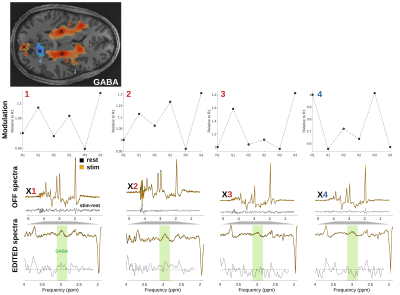 |
0284. Functional
Glutamate and GABA response maps to visual stimulation by
functional magnetic resonance spectroscopic imaging

A. Döring, Z. Huang, A. Kaiser, K. Landheer, U. Emir, L.
Xin
CIBM Center for Biomedical Imaging, Lausanne, Switzerland
Impact: The proposed fMRSI method offers a novel
functional imaging tool for accessing unprecedented
metabolic insights underlying brain function in health and
diseases.
|
| 16:24 |
 |
0285. A
Hypersampling Method to Resolve All Physiological Pulsations in
fMRI Signals, Revealing Age-related Differences
T. Xu, A. Wright, Y. Tong, Q. Wen
Purdue University, West Lafayette, United States
Impact: Our innovative hypersampling technique
demonstrates the ability to extract physiological signals
from fMRI data that are limited by temporal resolution. This
method enables researchers to analyze existing fMRI datasets
to investigate all physiological signals associated with
brain function and disease.
|
| 16:36 |
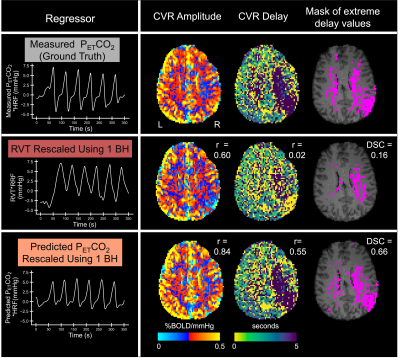 |
0286. Quantitative
mapping of cerebrovascular reactivity amplitude and delay with
breath-hold BOLD fMRI when breath-hold task compliance is low

R. Clements, K. Zvolanek, N. Reddy, K. Hemmerling, R.
Bayrak, C. Chang, M. Bright
Northwestern University, Evanston, United States
Impact: The proposed methods model cerebrovascular
reactivity in standard units, facilitating comparisons
across subjects and with established healthy ranges. This
work will increase the feasibility of mapping
cerebrovascular function in clinical populations with
variable breath-hold task compliance.
|
| 16:48 |
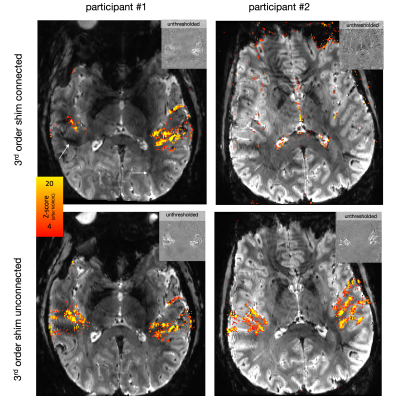 |
0287. 3rd
order shim for high resolution fMRI at 7T: It hurts more than it
helps
R. Huber, N. Boulant, A. T. Morgan, R. Stirnberg, G.
Bhagavatheeshwaran, Y. Chai, B. Poser, F. De Martino, J.
Sarlls, P. Bandettini
NIH, Bethesda, United States
Impact: The results presented here inform the UHF-fMRI
community about a simple trick to improve the data quality:
disconnecting 3rd order shim coils.
|
| 17:00 |
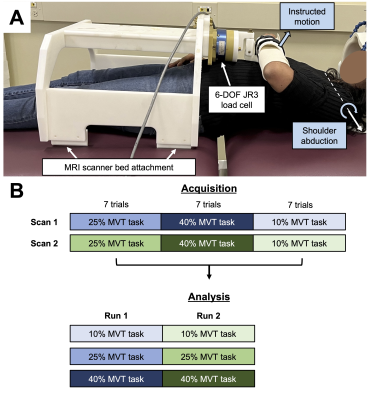 |
0288. Probing
somatotopic organization of motor cortex using a novel shoulder
motor task and multi-echo fMRI
N. Reddy, M. Medina, A. M. Acosta, A. Mandana, J. Dewald, M.
Bright
Northwestern University, Evanston, United States
Impact: We demonstrate the feasibility of studying
controlled, proximal upper extremity tasks with whole-brain
multi-band multi-echo fMRI; this technique has the potential
to elucidate group-level and subject-specific motor
organization in healthy individuals and clinical populations
with motor impairment.
|
| 17:12 |
 |
0289. SORDINO
fMRI: contrast mechanisms and applications in awake behaving
mice
S. Song, M. Mackinnon, T-H H. Chao, L-M Hsu, S. Albert, T.
Shnitko, T-W W. Wang, R. Nonneman, U. Emir, A. Hantman, S-H
Lee, W-T Chang, Y-Y I. Shih
The University of North Carolina at Chapel Hill, Chapel Hill, United States
Impact:
This study introduces SORDINO, a transformative fMRI technique that measures non-BOLD contrast. SORDINO enables precise, artifact-resistant, sensitive, and silent brain mapping in awake behaving subjects, enabling neuroimaging studies that were previously challenging or impossible. |
| 17:24 |
 |
0290. Are
we ready for 23Na MRI-based functional mapping with a 14 Tesla
scanner?
X. Yu, Y. Jiang, G. Yu, X. Liu, X. Zhou
Massachusetts General Hospital, Charlestown, United States
Impact: We investigate the feasibility of 14T rodent
23Na MRI for brain functional mapping with 10ms/frame
sampling rate and a voxel size of 0.24-0.35µl.
|
| 17:36 |
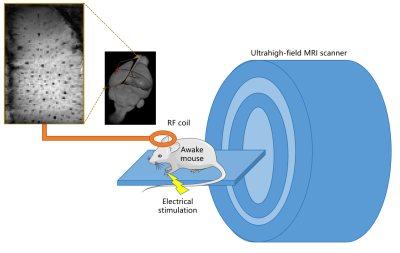 |
0291. Accelerated
Ultrahigh-field Line-scanning fMRI of Millisecond Temporal
Resolutionn Using Sparse and Subspace Constrains
S. Zhou, J. Yuan, X. Wu, Y. Zhu, Y. Zhou, D. Liang, Y. Li,
Y. He, H. Wang
Shenzhen Institute of Advanced Technology,Chinese Academy of Sciences, Shenzhen, China
Impact: Laying the groundwork for future research on
Line-scanning fMRI acceleration methods.
|
| 17:48 |
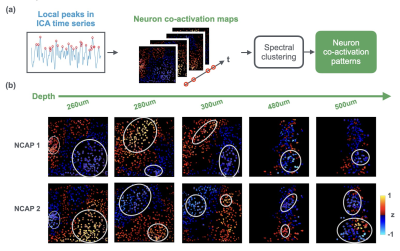 |
0292. Investigating
neuron-specific BOLD coupling via simultaneous two-photon
microscopy imaging and rs-fMRI of the mouse brain at 16.4T

Y. Ma, G. Zhang, W. Zhu, H. Wiesner, Z. Cheng, C. Wang,
K. Ugurbil, X-H Zhu, M. Cui, W. Chen
University of Minnesota, Minneapolis, United States
Impact: We investigated neuron-specific BOLD coupling to
be spatially distinct and time-dependent at resting state
using simultaneous TPMI and rs-fMRI on mice at 16.4T. The
findings provide new insights into how clustered neurons
drive BOLD signal fluctuations in the resting brain.
|
The International Society for Magnetic Resonance in Medicine is accredited by the Accreditation Council for Continuing Medical Education to provide continuing medical education for physicians.